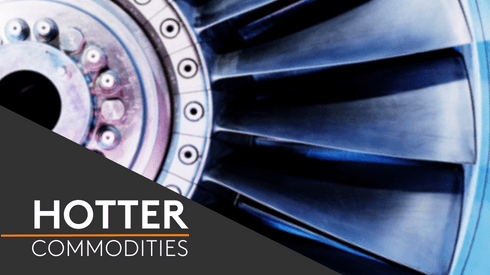Usually, the fourth quarter is a busy period for annual contract negotiations in any commodity market. But some cobalt hydroxide consumers have yet to start talks, because of market concerns and the fast-developing availability of mixed hydroxide precipitate (MHP) as an alternative supply of cobalt.
“Overall sentiment for the cobalt market in 2023 is very weak, and cobalt demand in 2023 is expected to remain low, in our opinion,” a Chinese producer source said at the Antaike cobalt and nickel conference in China, held November 2-4.
“Many cobalt producers feel that spot purchases will largely fulfill the weak demand, and negotiations of long-term contracts haven’t begun yet. We are not going to sign long-term contracts for cobalt hydroxide, since we will get enough supply from our MHP supply contract,” the source added.
Total cobalt supply was estimated to be 206,000 tonnes in 2023, an increase of 26,000 tonnes from 180,000 tonnes in 2022, according to Fastmarkets’ research team.
Find out more about Fastmarkets NewGen Short-Term Forecasts
Demand for this material was forecast to increase by 17,000 tonnes to 194,000 tonnes in 2023. Despite this year-on-year increase, the market was forecast to be in a supply surplus of 12,000 tonnes in 2023.
Forecasts for a supply surplus damped market sentiment, with continuing concerns for end-demand arising from global macroeconomic concerns and the continuation of the zero-Covid policy in China.
Questions have been raised about sales of electric vehicles (EVs) in Europe next year. Uncertainty about consumer spending ability in the current economic climate, and rapid growth in lithium-iron-phosphate (LFP) battery usage for the Chinese EV market, were both forecast to curtail some of the year-on-year increase in cobalt demand, according to a research note published by Goldman Sachs on November 9.
“Consumer electrics demand in China is in a depressed state,” a second cobalt producer source said.
Some market participants expected spot purchases of hydroxide to increase next year, owing to the current reluctance to finalize long-term agreements, and this could bring added volatility.
“The spot market for cobalt hydroxide in 2023 will be much more active, because market participants want to lower their long-term supply [volumes] in expectation of weak demand,” a third producer source said.
Fastmarkets assessed the cobalt hydroxide payable indicator, min 30% Co, cif China, % payable of Fastmarkets’ standard-grade cobalt price (low end), at 60-62% on November 9. This was a marked decline from 89-91% on November 10, 2021.
Cobalt supply issues as Tenke unresolved
The continuing suspension of material exports from the Tenke Fungurume cobalt-copper mine (TFM) that first emerged in July has also contributed to the present uncertainty in the cobalt market. The mine in the Democratic Republic of Congo (DRC) is operated by China Molybdenum Co (CMOC).
TFM was expected to produce 17,500-20,500 tonnes of cobalt in 2022, according to Fastmarkets’ research. The mine mostly produces cobalt hydroxide, and is still producing hydroxide but cannot export the material, Fastmarkets understands.
“There is so much uncertainty at the moment, but someone has to ‘start dancing’ soon. To agree long-term supply contracts with the Tenke situation still unresolved would be a big risk,” the second cobalt producer source said.
Some market participants have signalled that they were in a position, with supply on hand, to wait for a resolution to the months-long dispute between CMOC and DRC state-owned mining firm Gécamines.
“We may start negotiations of the annual contract for cobalt hydroxide in the first quarter of 2023,” the first producer source said. “We are well stocked, and the backlog of material at ports is also large… So we are in no hurry to start negotiations now.”
Downturn in cobalt sulfate supply
With the wider cobalt market in a downtrend, some cobalt sulfate producers have been said to be examining options to reduce cobalt sulfate production in favor of nickel sulfate, due to a changing demand outlook. Such a process could take “two to three months or less,” according to one manufacturer.
“Battery materials producers suffered losses from cobalt sulfate production in a weak cobalt market this year,” the first producer source said. “While the nickel sulfate market is tight and brings better margin, many battery materials producers are converting their cobalt sulfate production lines to nickel sulfate production, which is easy to do. As a result, there will be even less need for cobalt hydroxide next year.”
Fastmarkets’ assessed the price of cobalt sulfate, 20.5% Co basis, exw China, at 58,000-60,000 yuan ($7,991-8,266) per tonne on November 9. This was down from 102,000-103,000 yuan per tonne on January 5 this year.
Support for cobalt hydroxide payables
Some market participants believed that there was support for cobalt hydroxide payables, however, coming as a result of the recent declines in the price for cobalt metal standard grade.
“The hydroxide market is not falling, I would see it as stable… and moving up if the [standard grade] metal price continues to fall,” one cobalt trader said.
On the topic of the cobalt hydroxide outlook, other market participants noted again the effects of the export suspension in effect at TFM.
“There has been no material exported out of that mine since July,” a second trader said. “If a force majeure notice is declared after a breakdown in negotiations, there would have to be a big upside to cobalt prices as a result.”
Keep up to date with the latest news and insights on our cobalt market page.




